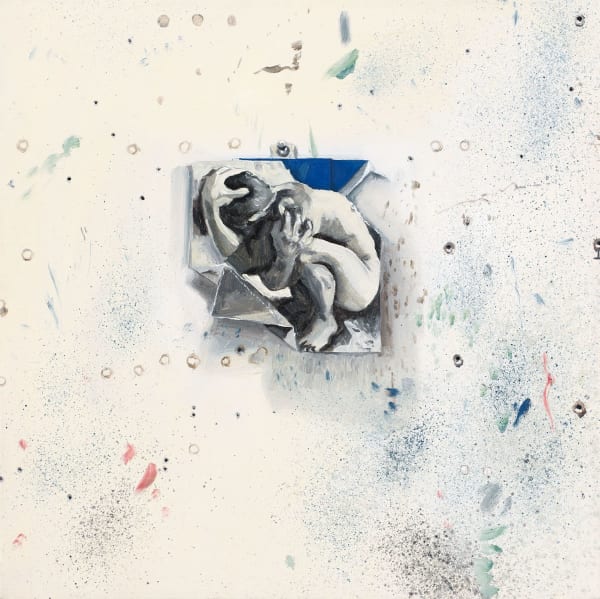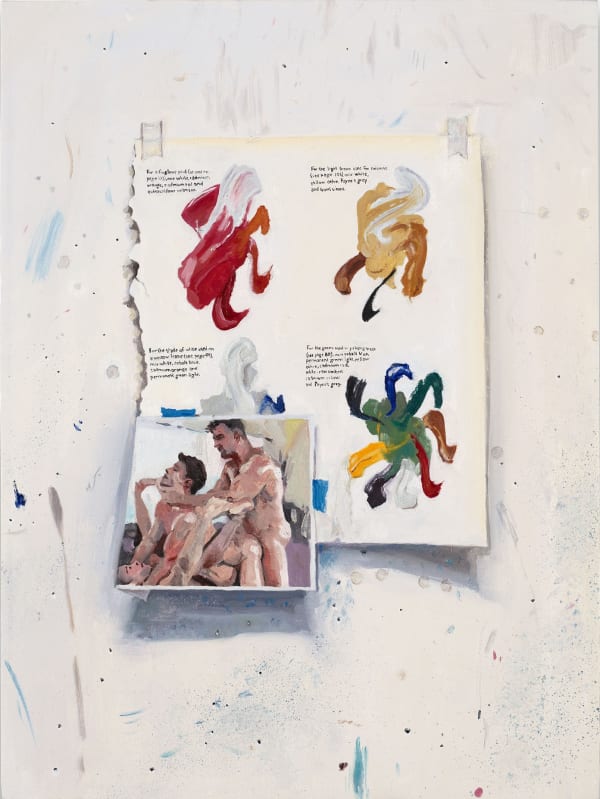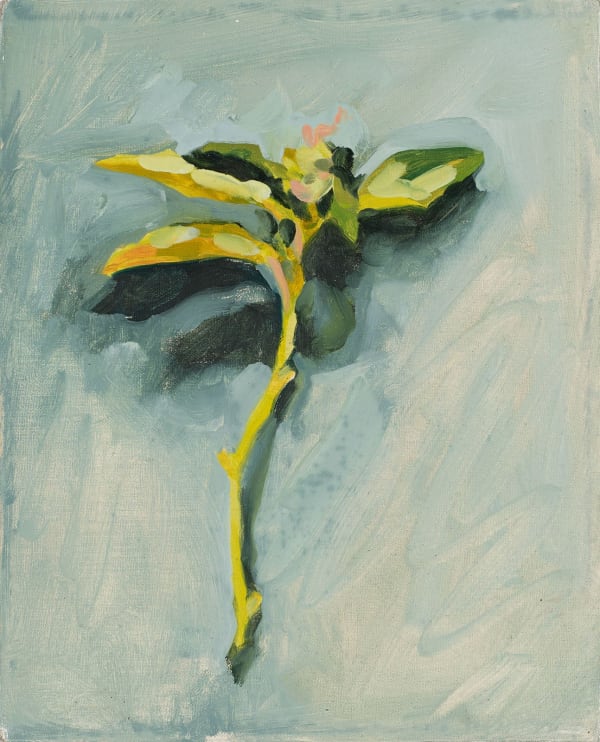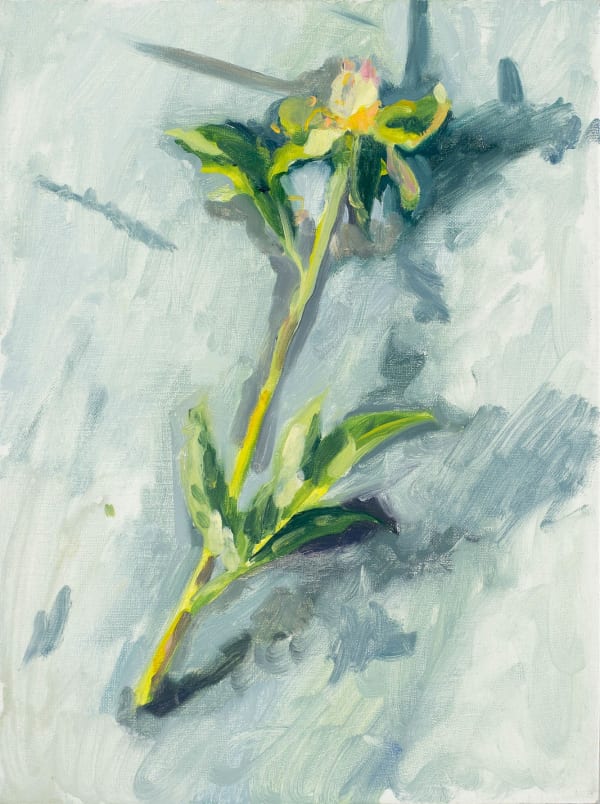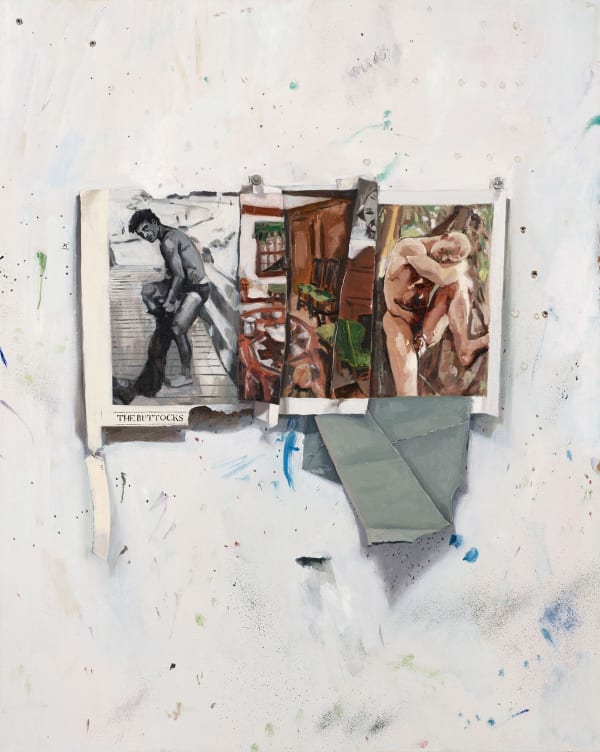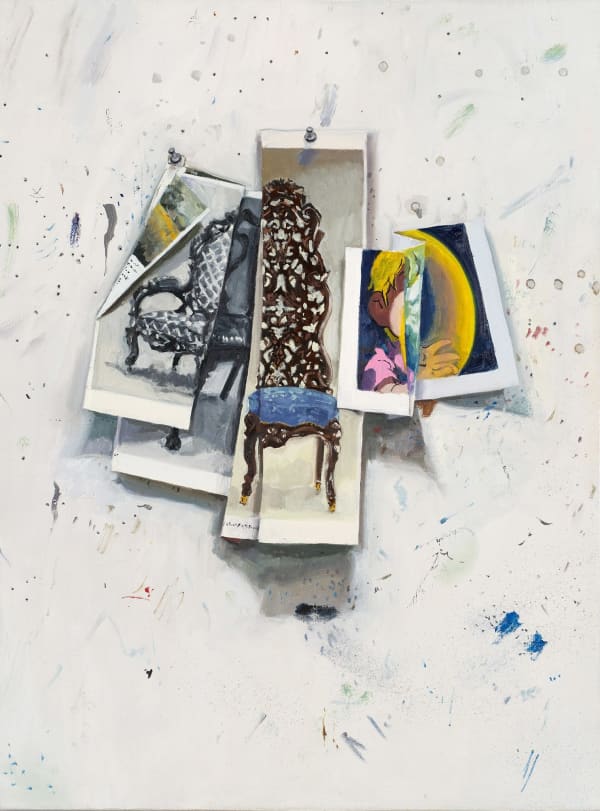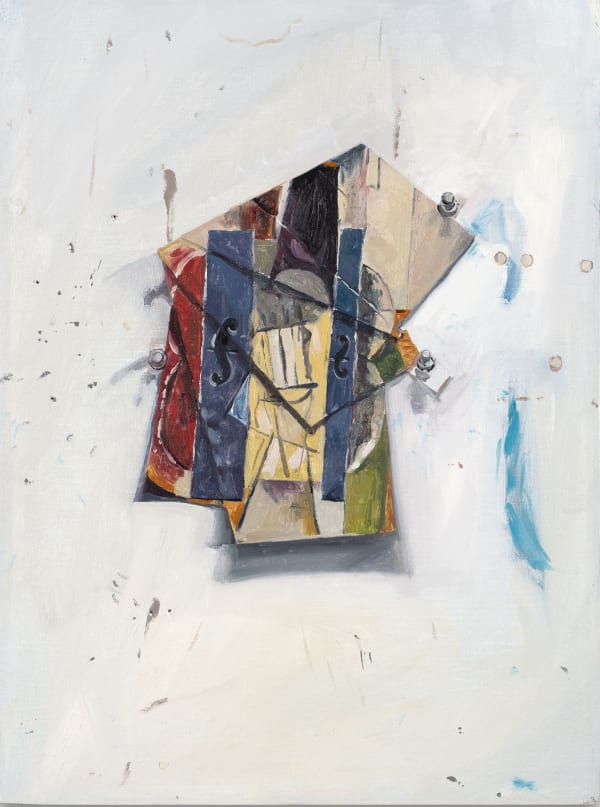Hank Ehrenfried: Under the Impression
"The paintings in Under the Impression brim with a sense of respect and awe for existence, manifestly advocating for Queer joy, for Queer pleasure, for openness, for the examined life; the paintings do stake out a position, but they do so with humility, as if to contend that uncertainty is the path to humility. Humility, by its nature, leads to softness, to understanding, to peace." —John Brooks
Ehrenfried's canvases are the products of his experiments within an archive he has built over several years, an accumulation of found and sought-out materials that includes auction catalogs, gay erotica, instructional guides for amateur artists, museum guides, lifestyle magazines, personal photographs, and other ephemera. He compiles these into unique collages that explore the subtle similarities of form, word, and concept among their disparate contents. Dissatisfied with simply juxtaposing these images, Ehrenfried tears, cuts, folds, and recombines them in improvisatory fashion to foreground these correspondences as well as the objects' materiality. The artist then hangs these collages on the walls of his studio and paints them from life as trompe l'œil. The resulting work is an arresting memorial to these materials, whose unexpected resemblance brought them together for a brief moment in the artist's eye.
The exhibition title, Under the Impression, refers to the multiple manipulations involved in the translation of Ehrenfried's archival materials into collage and finally into painting. Each of these operations-from the selection of constituent elements to the construction and rendering of the whole-mediates the viewer's experience of the artist's initial images, producing only an impression of their significance. The last of these also involves a more literal impression, of a three-dimensional collage pressed into two-dimensional space. Ehrenfried's paintings join both of these implications of the term, the metaphorical flattening of the image through its reproduction and the physical flattening on the plane of the canvas. In doing so they play with notions of originality and iterability, of the relative value of first and multiple impressions. The illusions of these paintings prompt viewers to reconsider the familiarity of their contents in light of this economy of reproduction.
-
 Hank Ehrenfried, Backs, 2023
Hank Ehrenfried, Backs, 2023 -
 Hank Ehrenfried, Crouching , 2023
Hank Ehrenfried, Crouching , 2023 -
 Hank Ehrenfried, Four Halves, 2023
Hank Ehrenfried, Four Halves, 2023 -
 Hank Ehrenfried, Awakening
Hank Ehrenfried, Awakening -
 Hank Ehrenfried, Creating Erotic Images, 2023
Hank Ehrenfried, Creating Erotic Images, 2023 -
 Hank Ehrenfried, Four Mixes, 2023
Hank Ehrenfried, Four Mixes, 2023 -
 Hank Ehrenfried, Gravity is the Grave Weapon, 2023
Hank Ehrenfried, Gravity is the Grave Weapon, 2023 -
 Hank Ehrenfried, I Wake to Dream of Painting, 2023
Hank Ehrenfried, I Wake to Dream of Painting, 2023 -
 Hank Ehrenfried, One Chair and Four Halves, 2023
Hank Ehrenfried, One Chair and Four Halves, 2023 -
 Hank Ehrenfried, Open Mouth, 2023
Hank Ehrenfried, Open Mouth, 2023 -
 Hank Ehrenfried, Peony 1, 2023
Hank Ehrenfried, Peony 1, 2023 -
 Hank Ehrenfried, Peony 2 , 2023
Hank Ehrenfried, Peony 2 , 2023 -
 Hank Ehrenfried, Peony 3, 2023
Hank Ehrenfried, Peony 3, 2023 -
 Hank Ehrenfried, Tulips on the Rug, 2023
Hank Ehrenfried, Tulips on the Rug, 2023 -
 Hank Ehrenfried, Ritti Mit Angel, 2023
Hank Ehrenfried, Ritti Mit Angel, 2023 -
 Hank Ehrenfried, The Buttocks, 2023
Hank Ehrenfried, The Buttocks, 2023 -
 Hank Ehrenfried, Tulips on the Table , 2023
Hank Ehrenfried, Tulips on the Table , 2023 -
 Hank Ehrenfried, Unfolded Chair , 2023
Hank Ehrenfried, Unfolded Chair , 2023 -
 Hank Ehrenfried, Violin Hanging on the Wall , 2023
Hank Ehrenfried, Violin Hanging on the Wall , 2023 -
 Hank Ehrenfried, Wrestling, 2023
Hank Ehrenfried, Wrestling, 2023



